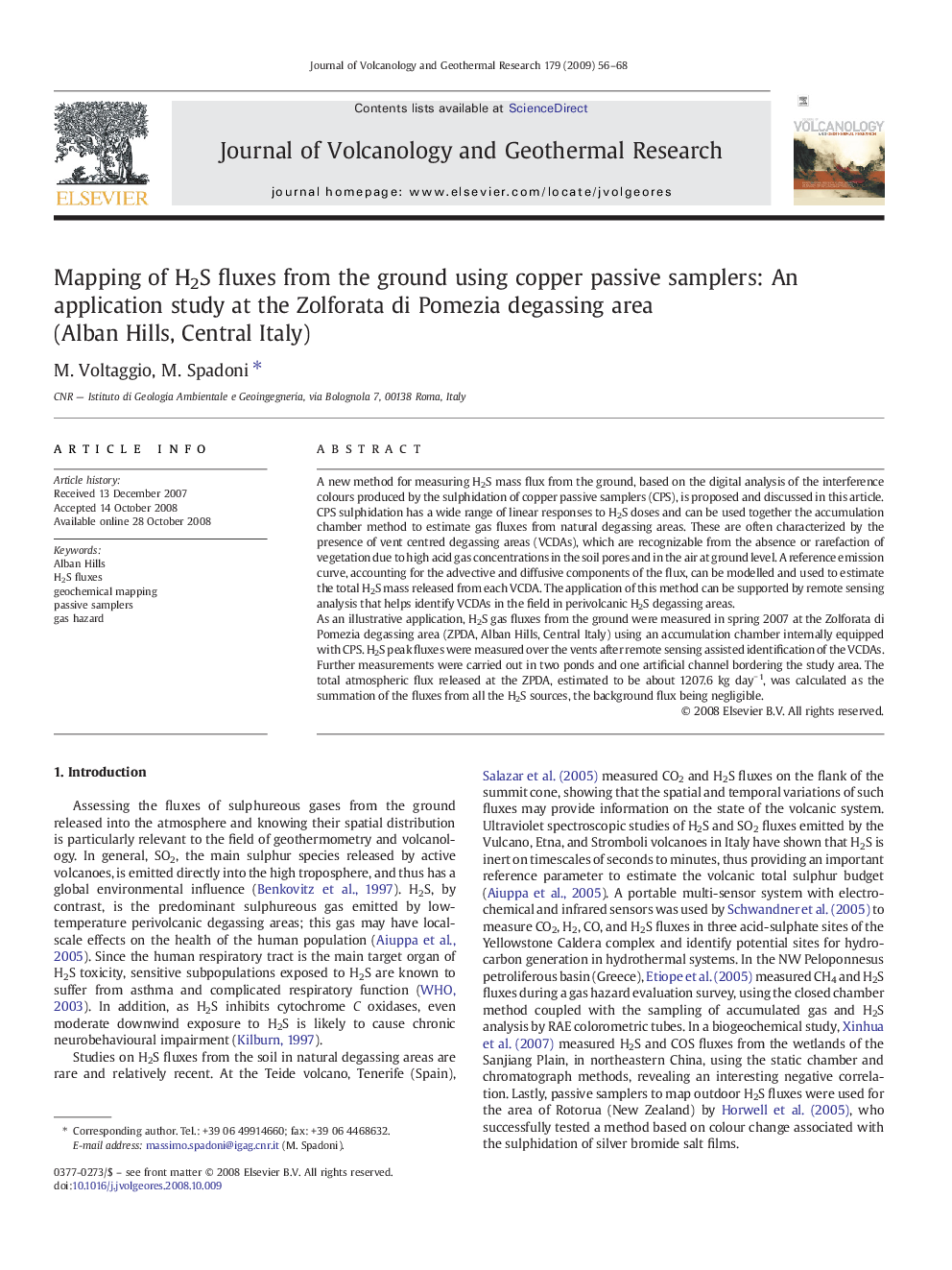| Article ID | Journal | Published Year | Pages | File Type |
|---|---|---|---|---|
| 4714503 | Journal of Volcanology and Geothermal Research | 2009 | 13 Pages |
A new method for measuring H2S mass flux from the ground, based on the digital analysis of the interference colours produced by the sulphidation of copper passive samplers (CPS), is proposed and discussed in this article. CPS sulphidation has a wide range of linear responses to H2S doses and can be used together the accumulation chamber method to estimate gas fluxes from natural degassing areas. These are often characterized by the presence of vent centred degassing areas (VCDAs), which are recognizable from the absence or rarefaction of vegetation due to high acid gas concentrations in the soil pores and in the air at ground level. A reference emission curve, accounting for the advective and diffusive components of the flux, can be modelled and used to estimate the total H2S mass released from each VCDA. The application of this method can be supported by remote sensing analysis that helps identify VCDAs in the field in perivolcanic H2S degassing areas.As an illustrative application, H2S gas fluxes from the ground were measured in spring 2007 at the Zolforata di Pomezia degassing area (ZPDA, Alban Hills, Central Italy) using an accumulation chamber internally equipped with CPS. H2S peak fluxes were measured over the vents after remote sensing assisted identification of the VCDAs. Further measurements were carried out in two ponds and one artificial channel bordering the study area. The total atmospheric flux released at the ZPDA, estimated to be about 1207.6 kg day− 1, was calculated as the summation of the fluxes from all the H2S sources, the background flux being negligible.
